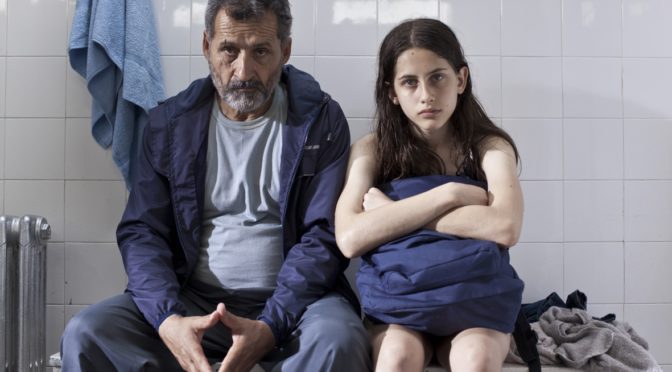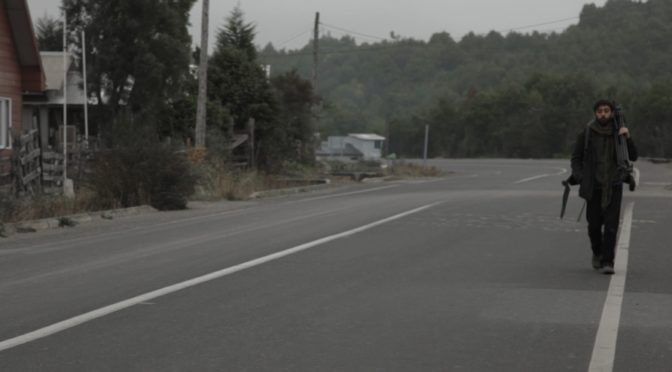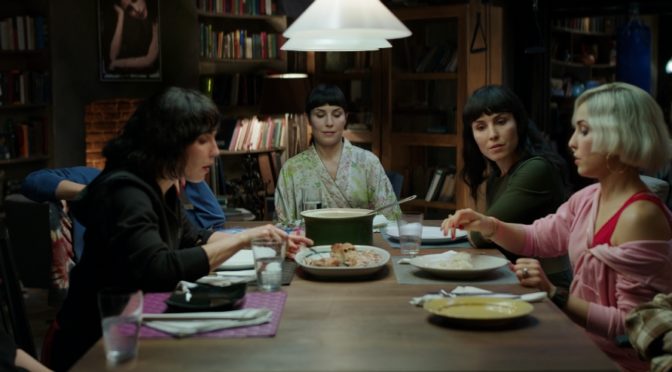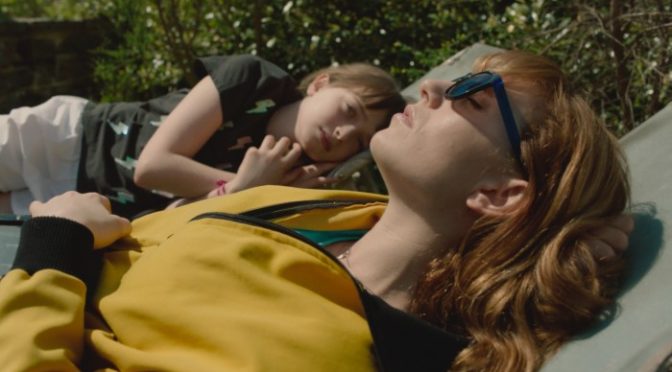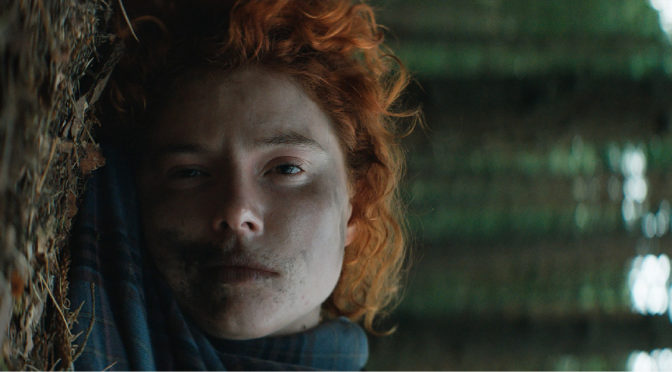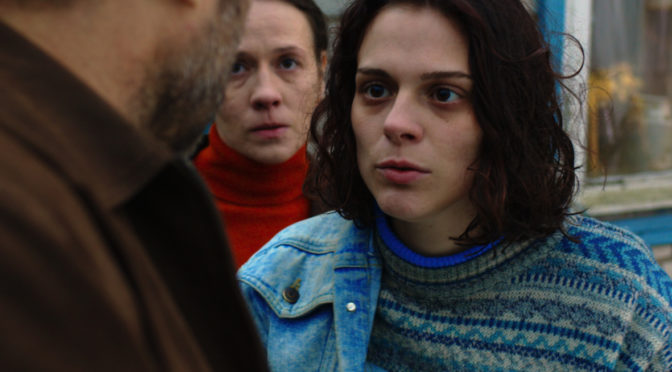È uno scontro/incontro quello messo in scena in Arpón, dramma scritto e diretto dal regista venezuelano Tomás Espinoza, che partecipa al concorso di quest’anno con il suo primo lungometraggio. Al centro della vicenda un uomo e una ragazzina, antagonisti ma accomunati dal desiderio di ribellione.
Archivi categoria: TFF 35 – 2017
“LAURI MÄNTYVAARAN TUUHEET RIPSET – THICK LASHES OF LAURI MÄNTYVAARAN ” by HANNALEENA HAURU
Versione inglese a cura del Master in Traduzione per il Cinema, la Televisione e l’Editoria Multimediale
Article by: Elio Sacchi
Translation by: Melissa Borgnino
The explosion of a bouquet, the kidnapping of a groom and a motocross escape on water are the scenes that introduce Finnish director Hannaleena Hauru’s first feature film, a grotesque and surreal coming of age story, with many cartoonish situations.
“LAURI MÄNTYVAARAN TUUHEET RIPSET – THICK LASHES OF LAURI MÄNTYVAARAN ” DI HANNALEENA HAURU
L’esplosione di un bouquet, il rapimento dello sposo e una fuga in motocross sull’acqua bastano alla regista finlandese Hannaleena Hauru, al suo primo lungometraggio, per introdurre un coming of age grottesco, surreale e con numerose situazioni da cartoon. Continua la lettura di “LAURI MÄNTYVAARAN TUUHEET RIPSET – THICK LASHES OF LAURI MÄNTYVAARAN ” DI HANNALEENA HAURU
“La madre, el hijo y la abuela” by Benjamín Brunet
Versione inglese a cura del Master in Traduzione per il Cinema, la Televisione e l’Editoria Multimediale
Article by: Annagiulia Zoccarato
Translation by: Federica Franzosi
The Onde section of the 35th Torino Film Festival includes among its titles a film that is as touching as it is delicate. La madre, el hijo y la abuela is the first feature film by the Chilean director Benjamín Brunet, which was filmed in the city of Chaitén after the eruption of the volcano with the same name. The movie is divided in three chapters, one for each character, and walks on the thin line between fiction and documentary.
Continua la lettura di “La madre, el hijo y la abuela” by Benjamín Brunet
“La madre, el hijo y la abuela” di Benjamín Brunet
La sezione Onde del trentacinquesimo Torino Film Festival vede tra i titoli che la compongono un’opera prima tanto emozionante quanto discreta. La madre, el hijo y la abuela è il primo lungometraggio del giovane regista cileno Benjamín Brunet che filma nella città di Chaitén dopo l’eruzione dell’omonimo vulcano. Articolato in tre capitoli come i propri personaggi, il film cammina sul sottile filo che separa fiction e documentario.
Continua la lettura di “La madre, el hijo y la abuela” di Benjamín Brunet
“What Happened to Monday” by Tommy Wirkola
Versione inglese a cura del Master in Traduzione per il Cinema, la Televisione e l’Editoria Multimediale
Article by: Chiara Gioffrè
Translation by: Emanuela Ismail
In a distopian future in which governments apply the strict policy of the only child, as a consequence of the overpopulation of the earth, seven twin sisters live their lives hidden. Each of them is allow to go out only once a week, the day that matches her name. They create a single identity in which everyone brings a part of her own being: Karen Settman. Everything flows quiet, until one of them, Monday, does not come back home.
The movie (edited by Raffaella de Laurentis) was initially displaying seven twin brothers as main characters. But Tommy Wirkola made amend the script in order to ask Noomi Rapace to perform the sisters.
Continua la lettura di “What Happened to Monday” by Tommy Wirkola
“What Happened to Monday” di Tommy Wirkola
In un futuro distopico in cui per fronteggiare la sovrappopolazione terrestre i governi applicano una rigorosa politica del figlio unico, sette gemelle vivono la loro esistenza nascoste, uscendo di casa ciascuna in un unico giorno della settimana, quello corrispondente al proprio nome, e assumendo un’unica identità a cui ognuna di loro apporta parte del proprio essere: Karen Settman.
Tutto sembra procedere normalmente, finché un lunedì Monday non fa ritorno a casa.
Il film (a cura di Raffaella De Laurentis) era inizialmente concepito con sette gemelli maschi come protagonisti; tuttavia Tommy Wirkola fece modificare la sceneggiatura per poter chiedere a Noomi Rapace di interpretare le sorelle.
Continua la lettura di “What Happened to Monday” di Tommy Wirkola
“MESSI AND MAUD” by MARLEEN JONKMAN
Versione inglese a cura del Master in Traduzione per il Cinema, la Televisione e l’Editoria Multimediale
Article by: Fabio Ferrari
Translation by: Cristina Di Bona
Messi and Maud wasn’t the first title of this film. When it has been presented at the Toronto International Film Festival (TIFF), its title was La Holandesa. Subsequently, the agent decided to change it for the international distribution. For the director Marleen Jonkman, her movie will always be La Holandesa. Indeed, the plot revolves around a Dutch woman. Continua la lettura di “MESSI AND MAUD” by MARLEEN JONKMAN
“MESSI AND MAUD” di MARLEEN JONKMAN
Messi and Maud non si è sempre chiamato così. Quando è stato presentato al Toronto International Film Festival (TIFF), si intitolava La Holandesa. Solo in seguito l’agente ha deciso di cambiare il titolo per il mercato internazionale. Ma per la regista Marleen Jonkman la sua opera resterà sempre La Holandesa. Ed è proprio intorno a una donna olandese che ruotano le vicende di questa pellicola. Continua la lettura di “MESSI AND MAUD” di MARLEEN JONKMAN
“TITO E GLI ALIENI” by PAOLA RANDI
Versione inglese a cura del Master in Traduzione per il Cinema, la Televisione e l’Editoria Multimediale
Article by: Giorgia Bertino
Translation by: Valeria Tutino
“In space, every particle has a voice”: Paola Randi, director of Tito e gli alieni, chooses science fiction as a testing ground to start telling the story of an unusual family. Anita, impatient 16 year old, and her brother Tito, 7 year old and already a perfect ragamuffin who knows his own, after the death of both their parents, are entrusted to their uncle (an intense Valerio Mastandrea), ex professor and now scientist in crisis holed up in Nevada desert.
“BARRAGE” di LAURA SCHROEDER
Se andaste a vedere Barrage senza sapere ancora che Lolita Chammah è la vera figlia di Isabelle Huppert, vi trovereste meravigliati nel notare la netta somiglianza tra le due attrici, che nel film interpretano a loro volta i ruoli di figlia e madre. Continua la lettura di “BARRAGE” di LAURA SCHROEDER
“BARRAGE” by LAURA SCHROEDER
Versione inglese a cura del Master in Traduzione per il Cinema, la Televisione e l’Editoria Multimediale
Article by: Sofia Nadalini
Translation by: Laura Cocco
If you would like to watch the movie ”Barrage” without knowing that Lolita Chammah is Isabelle Huppert’s daughter, you would be surprised to see the resemblance between the two actresses. In the movie, as in the real life, they are mother and daughter.
Continua la lettura di “BARRAGE” by LAURA SCHROEDER
“BEAST” by MICHAEL PEARCE
Versione inglese a cura del Master in Traduzione per il Cinema, la Televisione e l’Editoria Multimediale
Article by: Lucia Grosso
Translation by: Valeria Alfieri
In the Island of Jersey, Great Britain, young Moll is torn between two ways of living: the one where she is trapped by her family societal norms, and the carefree, ruleless one of her lover Pascal. This situation is framed by a series of murders that have been following one another throughout the years and that will invade the already troubled life of the protagonist. Continua la lettura di “BEAST” by MICHAEL PEARCE
“BEAST” di MICHAEL PEARCE
Sull’isola di Jersey, Gran Bretagna, la giovane Moll è in bilico tra due vite. Quella intrappolata nelle convenzioni sociali della sua famiglia e quella libera e priva di regole del suo amante Pascal. Il tutto contornato da una serie di delitti che si susseguono da diversi anni sull’isola e che faranno bruscamente irruzione nella già turbolenta quotidianità della protagonista. Continua la lettura di “BEAST” di MICHAEL PEARCE
“LET THE SUMMER NEVER COME AGAIN” by ALEXANDRE KOBERDIZE
Versione inglese a cura del Master in Traduzione per il Cinema, la Televisione e l’Editoria Multimediale
Article by: Maria Cagnazzo
Translation by: Melissa Borgnino
A wind instrument played with uncertainty takes us into a blurred and just as uncertain world.
Let the Summer Never Come Again is entirely filmed with an old mobile phone, and the low quality of the images hits us with astounding force from the very beginning. The director is intentionally vague, forcing us to stay in the dark without clearly showing what is really going on. But we do not need to see well in order to understand the distress that pours out from every single sequence. This is the style of the author, which pervades the entire movie.
Continua la lettura di “LET THE SUMMER NEVER COME AGAIN” by ALEXANDRE KOBERDIZE
“LET THE SUMMER NEVER COME AGAIN” di ALEXANDRE KOBERDIZE
Uno strumento a fiato suonato con incertezza ci apre la porta di un mondo sfocato, anch’esso incerto.
Let the Summer Never Come Again è interamente girato con un cellulare di vecchia generazione e la scarsa qualità dell’immagine emerge fin dall’inizio in maniera imponente. Il regista ricerca l’imprecisione, e noi siamo costretti a non sapere, a non poter osservare pienamente ciò che ci viene mostrato. Non c’è bisogno di vedere bene per capire il disagio che trasuda da ogni sequenza: è questa la poetica di cui è intriso il film.
Continua la lettura di “LET THE SUMMER NEVER COME AGAIN” di ALEXANDRE KOBERDIZE
“NELLA GOLENA DEI MORTI FELICI” by MARCO MORANDI
Versione inglese a cura del Master in Traduzione per il Cinema, la Televisione e l’Editoria Multimediale
Article by: Vanessa Mangiavacca
Translation by: Federica Franzosi
The theatre fills up with ears of wheat, but they are not those of the wheat fields in Cotignola (a town in Romagna, on the banks of the Senio river) that are seen on screen during the screening of the film, but they are being distributed to cinema-goers while they are waiting to get in. “It’s a documentary, but it’s not a documentary”. Ten minutes are enough for us to understand: the rural atmosphere will very soon change into a surreal and dreamlike vibe.
Continua la lettura di “NELLA GOLENA DEI MORTI FELICI” by MARCO MORANDI
“NELLA GOLENA DEI MORTI FELICI” di MARCO MORANDI
La sala si riempie di spighe, ma non sono quelle dei campi di grano di Cotignola (comune romagnolo sul fiume Senio) che appaiono sullo schermo durante la proiezione del film, bensì quelle che vengono distribuite agli spettatori durante l’attesa. «È un documentario, ma non è un documentario». Ci bastano una decina di minuti per comprendere: l’atmosfera contadina si tingerà ben presto di note surreali ed oniriche. Continua la lettura di “NELLA GOLENA DEI MORTI FELICI” di MARCO MORANDI
“TESNOTA – CLOSENESS” by KANTEMIR BALAGOV
Versione inglese a cura del Master in Traduzione per il Cinema, la Televisione e l’Editoria Multimediale
Article by: Ottavia Isaia
Translation by: Cristina Di Bona
In his first feature film, presented at the Turin Film Festival in the section Festa Mobile, Balagov tells, in some of its aspects, an autobiographical story, opened and closed by the signs that introduce the film. Nalchik, a little village in the Northern Caucasus, 1988: the life of a quiet Jewish family changes when the David (Veniamin Kats) and his girlfriend Lea are kidnapped. A high price is requested for ransom. This film wonders what a family would decide to sacrifice to save one of its members.
Continua la lettura di “TESNOTA – CLOSENESS” by KANTEMIR BALAGOV
“TESNOTA – CLOSENESS” di KANTEMIR BALAGOV
Al suo esordio con un lungometraggio, presentato al Torino Film Festival nella sezione Festa Mobile, Kantemir Balagov sceglie di raccontare una storia a tratti autobiografica, aperta e chiusa da cartelli con cui si presenta ed introduce il film: 1998, siamo nel paesino di Nalchik, nel nord del Caucaso, dove la vita tranquilla di una famiglia ebrea viene sconvolta quando il figlio David (Veniamin Kats) e la fidanzata Lea vengono rapiti. Il riscatto richiesto è molto alto, e il film si interroga su cosa una famiglia possa decidere di sacrificare per il bene di uno dei componenti.
Continua la lettura di “TESNOTA – CLOSENESS” di KANTEMIR BALAGOV

